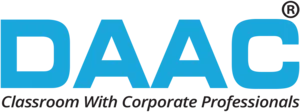Introduction to Web Development course

In today's digital era, web development skills are in high demand, offering lucrative career opportunities and the chance to create stunning online experiences. In today's digital age, having a strong online presence is crucial for individuals and businesses alike. Whether you're showcasing your portfolio, starting a blog, or launching an e-commerce store, understanding web development basics is essential. In this beginner's guide, we'll walk you through the fundamental concepts of web development in simple language, empowering you to create your own website from scratch, web development courses, including fees, duration, course syllabus, and compelling reasons to pursue this exciting field.
Table of Contents
- Understanding the Basics:
- Course Overview:
- Course Syllabus:
- Why Pursue Web Development? Before diving into the specifics, let's explore why web development is a rewarding career choice:
- Getting Started:
- Deploying Your Website:
- Some additional points about web development:
- Conclusion:
Understanding the Basics:
What is Web Development?
Web development is the process of building websites or web applications. It involves coding, designing, and maintaining websites to ensure they function smoothly and deliver an optimal user experience. n simpler terms, web development involves building everything you see and interact with on the internet. It's the behind-the-scenes work that enables websites to function, from the layout and design to the interactive features and functionality.
Frontend vs. Backend:
Frontend development focuses on the visual aspects of a website that users interact with, such as layout, design, and interactivity.
Backend development involves managing the server-side of a website, including database management, user authentication, and server configuration.
Course Overview:
Now, let's delve into the details of a typical web development course, covering fees, duration, and course syllabus.
Course Name: Comprehensive Web Development Bootcamp
- Fees: $500 (may vary depending on the institution or platform)
- Duration: 12 weeks (part-time)
Course Syllabus:
Introduction to Web Development
- Understanding the basics: HTML, CSS, JavaScript
- Setting up a development environment
Frontend Development
- Building responsive layouts with CSS frameworks (e.g., Bootstrap)
- Enhancing interactivity with JavaScript and jQuery
Backend Development
- Introduction to server-side programming languages (e.g., Node.js, Python)
- Database management using SQL and NoSQL databases (e.g., MySQL, MongoDB)
Full-Stack
- Integrating frontend and backend components to create dynamic web applications
- Version control with Git and GitHub
Why Pursue Web Development? Before diving into the specifics, let's explore why web development is a rewarding career choice:
High Demand: Businesses of all sizes require websites and web applications, creating a constant demand for skilled web developers.
Lucrative Salaries: Web developers often enjoy competitive salaries and ample job opportunities, with the potential for freelancing and remote work.
Creativity and Innovation: Web development allows you to unleash your creativity by designing visually appealing and interactive websites that engage users.
Continuous Learning: The field of web development is dynamic, with new technologies and trends emerging regularly, providing endless opportunities for growth and learning.
Getting Started:
HTML (HyperText Markup Language):
- HTML is the foundation of web development, used to structure the content of web pages using tags such as <html>, <head>, <body>, <p>, <div>, etc.
- Example:
<html> <head> <title>My Website</title> </head> <body> <h1>Welcome to My Website</h1> <p>This is a paragraph of text.</p> </body> </html>
CSS (Cascading Style Sheets):
- CSS is used to style and format the HTML content, controlling aspects like layout, color, typography, and responsiveness.
- Example:
body { font-family: Arial, sans-serif; background-color: #f0f0f0; } h1 { color: blue; }
JavaScript:
- JavaScript adds interactivity and dynamic behavior to websites, enabling features like form validation, animations, and real-time updates.
- Example:
document.getElementById("demo").innerHTML = "Hello, World!";
Deploying Your Website:
Web Hosting:
Choose a web hosting provider to store your website files and make them accessible on the internet. Popular options include Bluehost, HostGator, and SiteGround.
Domain Name:
Register a domain name (e.g., www.yourwebsite.com) to give your website a unique online address. Services like GoDaddy and Namecheap offer domain registration services.
Deploymen
Upload your website files to the web hosting server using FTP (File Transfer Protocol) or through a web hosting control panel. Test your website to ensure everything works as expected.
Some additional points about web development:
Responsive Design: With the proliferation of mobile devices, responsive web design has become crucial. Web developers must ensure that websites adapt and display correctly on various screen sizes and devices, providing a seamless user experience across desktops, tablets, and smartphones.
Cross-Browser Compatibility: Web developers need to test websites on different web browsers (e.g., Chrome, Firefox, Safari, Edge) to ensure they function consistently and correctly across various platforms. This involves addressing compatibility issues and implementing solutions to ensure optimal performance.
Accessibility: Web accessibility involves designing and developing websites that are usable by people of all abilities, including those with disabilities. Web developers should adhere to accessibility standards (such as WCAG) and implement features like alternative text for images, keyboard navigation, and semantic HTML to ensure inclusivity.
Performance Optimization: Website performance plays a crucial role in user satisfaction and search engine rankings. Web developers need to optimize website loading times, minimize file sizes, and utilize techniques like caching and compression to improve performance and efficiency.
Conclusion:
Congratulations! You've now embarked on your web development journey, equipped with the knowledge to create your own websites from scratch. Remember, practice makes perfect, so don't hesitate to experiment, learn from your mistakes, and continue honing your skills. With dedication and perseverance, you'll be building stunning websites in no time. With a blend of theory, hands-on practice, and expert guidance, you'll acquire the skills and confidence to succeed in this dynamic field. Don't miss out on this opportunity to unlock your potential and shape the future of the web. You can also refer to other relevant blog. Enroll today and take the first step towards an exciting career in web development! Happy coding!
